Urgent Care
Diagnosis, treatment, and services for your everyday medical needs such as flu shots and lab work.
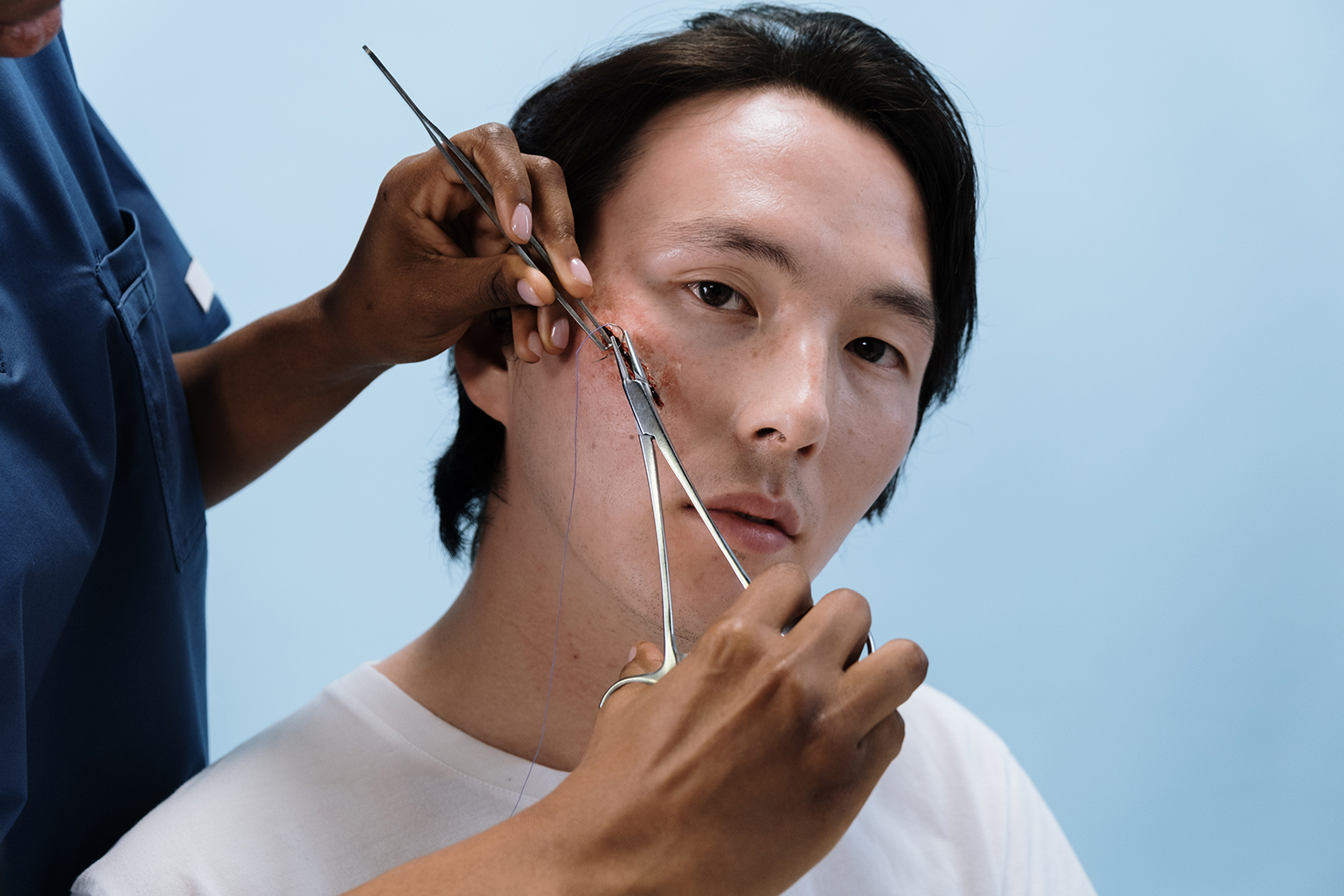
Major or small, we can all think back to a time when we cut, scraped, or grazed ourselves. Sometimes all we needed was a band-aid, other times stitches. Either way, these unexpected accidents happen, especially for kids. Children love to play and sometimes when they’re monkeying around on the jungle gym or the playground, they fall and find themselves with a laceration. As a parent, it can be terrifying to find your son or daughter suffering from an open wound which is why understanding the difference between a deep wound and a shallow one is so important.
A laceration is a tear or opening in the skin caused by an injury. Lacerations may be small and need only minor treatment or may be large enough to require emergency medical care. Wounds such as cuts, scrapes, and lacerations are a split of the skin caused by an impact of some sort. It is common for children to sustain these types of injuries through play, sports, accidents, or ordinary day-to-day activities. Lacerations and other abrasions can happen in almost any area of the body. Depending on the area affected and the severity of the cut, there may be a lot of bleeding or very little.
Minor wounds do not usually require medical attention and can be managed with standard first-aid procedures at home. You should apply pressure to your child’s wound with a clean paper towel or cloth and after removing pressure, the bleeding should slow down or stop altogether. If bleeding continues, reapply pressure and take your child to their healthcare provider for further evaluation.
If bleeding has stopped or slowed, rinse the wound and surrounding area with water. If you can see any dirt or debris in the wound, use a pair of sanitized tweezers to remove any particles. Very small amounts of dirt are OK in grazes but if there are large amounts that you can’t remove, take them to a medical professional who can do it for you.
Lastly, cover the wound with a bandage. This will help to keep the wound clean and will protect the area as it heals. Keeping the wound covered also keeps the wound moist, which helps the healing process.
Like minor wounds, try to stop the bleeding by applying pressure to the injured area. If this doesn’t work and there is a large amount of bleeding that does not quickly stop, or the wound is very deep or is a deep puncture wound, or the wound is gaping apart, despite controlling the bleeding it may need closing with glue or stitches which will require a visit to their healthcare provider.
Stitches are special types of thread that hold wound edges together while they heal. Stitches help to stop bleeding, reduce scarring and decrease the chance of infection in the wound.
Steri-Strips are special adhesive bandages that can sometimes be used on shallow wounds instead of stitches. Steri-Strips perform the same functions as stitches.
Lacerations that involve the face, are longer than 1/2 inch, are deep, or are bleeding heavily, may require stitches.
If your child’s healthcare provider needs to place stitches or use Steri-Strips to close a laceration, you will be given specific instructions on how to care for the stitches. Treatment at home will be based on the place and size of the laceration, the type of stitches used, and any special needs noted by your child’s physician. Sometimes antibiotics are given to help prevent infection in the wound.
Some stitches dissolve and do not need to be removed while other stitches require removal. Your child’s provider will let you know when to return to have stitches removed. It’s important to know that you should not attempt to remove your child’s stitches at home.
For minor wounds, change the bandage whenever it becomes wet or dirty and replace it with a fresh one. Watch for signs of infection as the wound heals and if it seems to not be healing properly, take them to their healthcare provider for evaluation.
Typically, lacerations are no big deal but if your child’s wound doesn’t stop bleeding and the cut looks deep, your best bet is to have them looked at by a medical professional. Wounds can be scary, and no parent wants to witness their son or daughter bleeding, but rest assured, the experts at Chai Care will take great care of your child and will have them as good as new in no time!
* Legal disclaimer: The content of this article and the entire Chai Care blog is for educational purposes only; it does NOT constitute medical advice and must not be considered as such. Please consult a medical professional regarding any symptoms or health concerns you or your loved ones.
Feb 21, 2023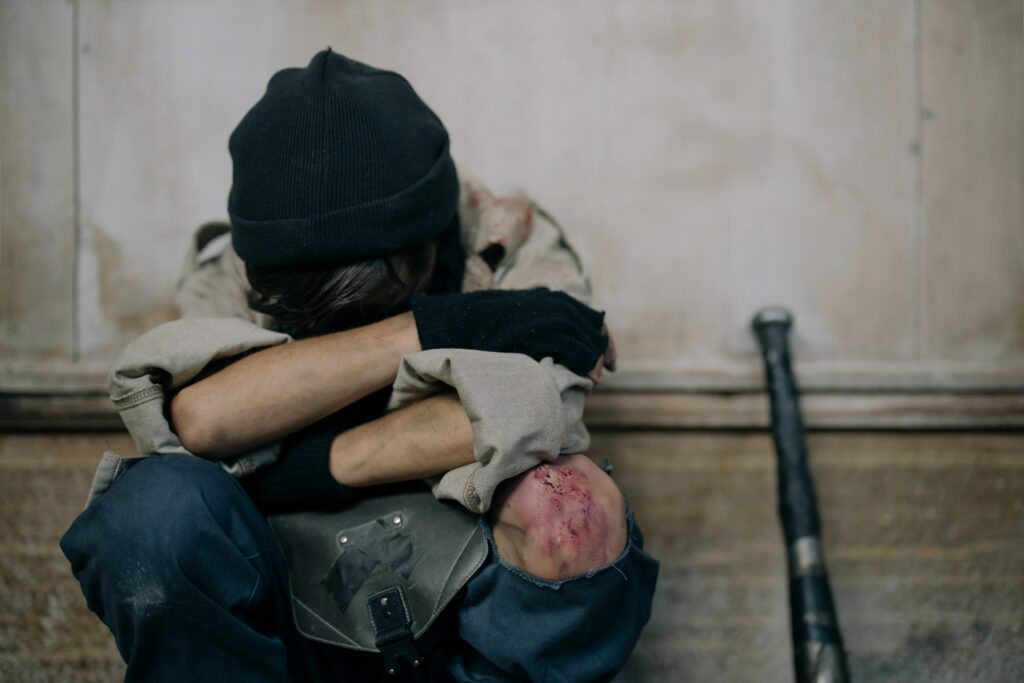
Kids are bound to injure themselves at some point or another. Sometimes it’s a broken bone after taking a hard fall, and other times it’s nothing more than a bruise while messing around with their friends. But every now and again a child can cut themselves and believe it to be “no big deal.” Usually, that is the case, unless the wound becomes infected. This is something a parent should keep a close eye on because when a cut or scrape becomes infected, it can lead to much more serious health problems that no parent wants for their child. Knowing the signs of an infected cut and how your child may act when having one is crucial so you can get it treated as quickly as possible before it gets worse.
Most people believe wounds are only caused by accidents, but the truth is anything that breaks the skin is considered to be a laceration because when the skin is broken, there is a risk of germs getting into the body and causing an infection. Skin is the body’s largest organ and helps protect it from bacteria, fungi, and viruses that live on its surface. Depending on the wound’s cleanness, depth, and size, will tell you how much care it needs.
Your healthcare provider will examine the wound and from there decide how they will go about treating it and the wound’s risk of infection. Clean wounds that aren’t contaminated with bacteria have the lowest risk of infection, making them much simpler to care for. Dirty or infected wounds, like an abscess, a deep scrape, or a cut, are a different story. These cuts need special treatment and monitoring to prevent infection. There are times when a wound is clean but there’s a risk of infection because of where it is located. Fluids and other contaminants may get into a wound that’s in an area with more bacteria such as the urinary tract, gastrointestinal system, or respiratory system. Dirt or a foreign object in the wound also can increase the risk of infection.
An infected wound typically gets worse instead of better. Any pain, redness, and swelling will usually increase in intensity making it obvious that the cut needs medical attention. In many ways, this is a good thing that the signs of infection are readily apparent. The first thing you should do with most small cuts and bruises is to apply first-aid. After doing this, monitor the wound for any of the following signs.
If the cut has scabbed over, but the scab keeps on growing, this could be a sign of infection underneath the top-layer skin.
Monitor the cut and speak to your child about what they are feeling. It’s important to make sure that the pain and swelling don’t keep increasing up to 48 hours after the initial injury.
If your child develops a headache or fever, you should take your little one to an urgent care facility for medical treatment. Rest assured, the experts at Chai Care will gladly help!
Most small to medium-sized wounds should heal within ten days. If this is not the case, visit your child’s healthcare provider for further examination.
Increased redness in the region is also a sign of infection. One of the most dangerous signs of infection is the presence of redness that appears to be tracing a path to your child’s heart. This must be treated as soon as possible.
Pay attention to discoloration, such as pus and fluid emerging from the wound.
When the wound is clean, your healthcare provider will close it by stitching the edges together in two separate layers. They will use dissolvable stitches to bring together the deeper layer of tissue under the skin. Then they will staple, tape, or stitch the skin over it. It’s important to note that healthcare experts don’t always close a wound right away. If there’s a chance a wound is contaminated, they will leave it open to clean it out, let’s say in the case that the wound is due to an animal bite. Closing an infected cut can trap bacteria inside which would lead to infection. When they’re sure no bacteria or other impurities remain, they will stitch or close the wound.
Sometimes, it’s best not to sew up a wound at all. If someone has lost a lot of tissues, it’s often beneficial to leave the wound open to heal through natural scar formation. Your child’s provider will also ask about their tetanus vaccine status, to make sure it’s up to date.
Before healing begins, the body gears up to defend itself against any infections. For the first couple of days, a wound may be swollen, red, and painful. This inflammation is a sign of the body’s immune system kicking in to protect the wound from infection. It is important to always keep the wound clean and dry to help the healing process. As the body does its self-healing, a scab begins to form over the wound on the outside. The scab’s job is to protect the wound as the damaged skin heals underneath. Underneath the scab’s defensive surface, new tissue begins to form.
Once the healing is finished, the scab dries up and falls off, leaving behind the repaired skin and a scar. The scar will be roughly 85% of the strength of normal skin and it will take a few months for the scar to be back to 100% strength of normal skin.
Serious wounds won’t heal overnight. It can take weeks for the body to build new tissue which makes at-home care important to prevent infection and minimize scarring. Make sure to keep the wound covered with a clean dressing until there’s no fluid draining from it. Your child’s healthcare provider will give you instructions on how to change the dressing and how often. It’s important to avoid getting the wound wet until further examination. Dirt in the water could seep into the wound and contaminate it. Also, there’s a risk that a wound might pull apart if it gets too wet. Lastly, make sure your son or daughter doesn’t pick or scratch the scab. A scab may itch as the skin underneath heals, but picking or scratching can rip the new skin underneath which will not only increase the healing time but will always make the scar worse.
The best way to help your child is to prevent an infection from ever happening. Any time your son or daughter gets a cut or scrap, the first step is to clean out the injury. Clean the wound with warm water for five minutes, then wash the surrounding area with soap. If there is still debris like glass or dirt in the wound, remove it, but be gentle and avoid pushing down so you don’t push it deeper into the cut. If you can’t remove all the debris or if you don’t feel comfortable trying to remove it yourself, go to an urgent care facility and the staff will do it for you.
Cuts and scrapes are extremely common among children which makes understanding the signs and symptoms of an infected wound so important. Even though infected wounds can have serious consequences, chances are the cut will heal itself on its own or your child’s healthcare provider will supply them with the proper treatment and medication, preventing a dangerous outcome. If the wound does not seem to be healing at home, take your little one to Chai Care and our trained experts will supply them with the care they need!
* Legal disclaimer: The content of this article and the entire Chai Care blog is for educational purposes only; it does NOT constitute medical advice and must not be considered as such. Please consult a medical professional regarding any symptoms or health concerns you or your loved ones.
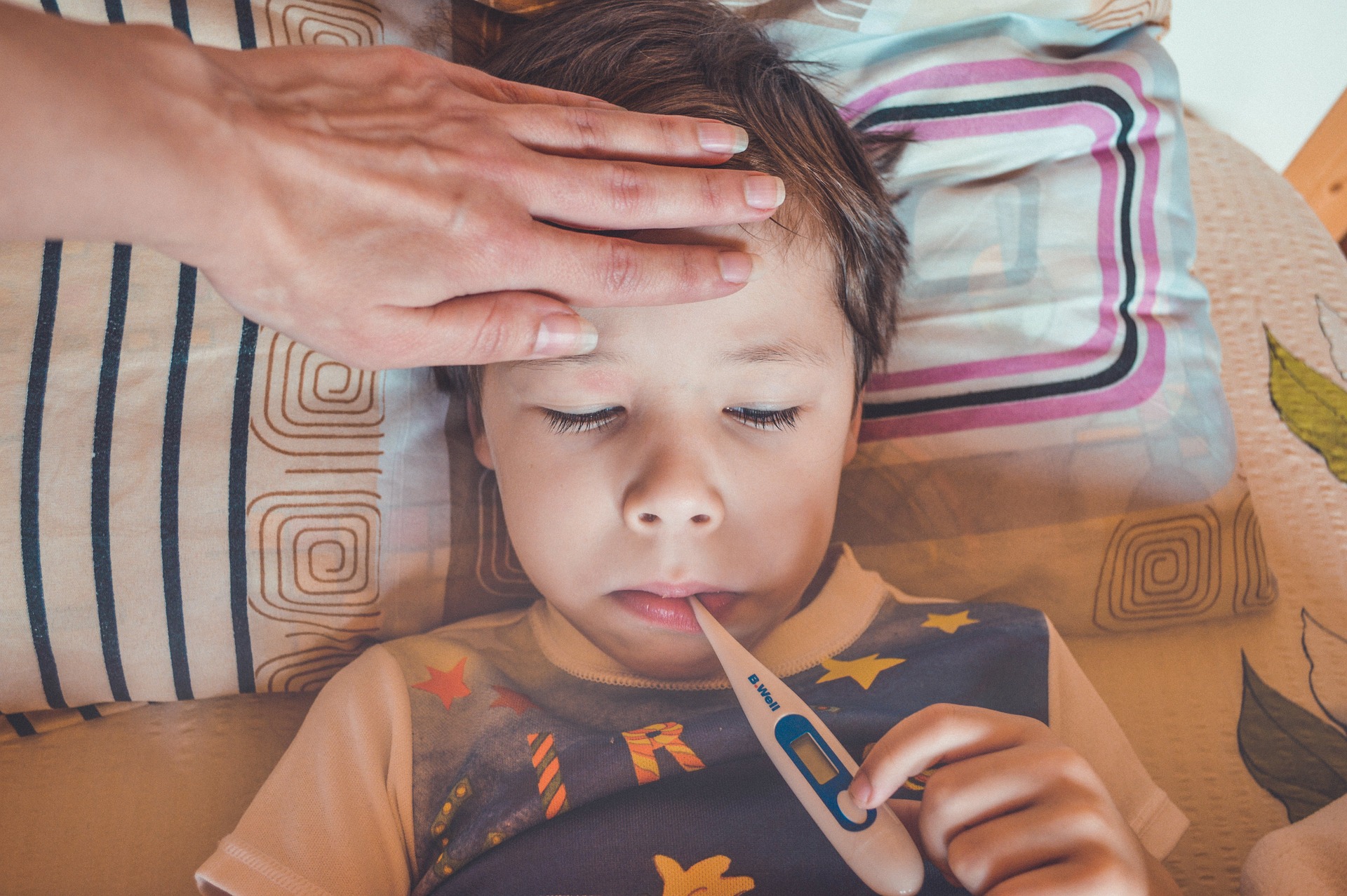
There is no other way of saying it, but we all poop. It’s something every person does and believe it or not, your stool says a lot about your health. With that being said, your child may have a tough time expressing this because of their lack of knowledge and they may be embarrassed to talk about it. It is important for you as the parent to be aware of your child’s bathroom habits so you know if they are ill or if you need to take them to see their healthcare provider. This may not be the most fun information to learn, but it is very important.
Diarrhea is when stools are loose and watery. When experiencing diarrhea, your child may also need to go to the bathroom more often. Diarrhea is a common problem. It may last 1 or 2 days and go away on its own. If diarrhea lasts more than 2 days, your child may have a more serious problem and should be seen by their healthcare provider.
The symptoms your child may experience when they have diarrhea can vary depending on if it’s mild or severe and what the cause of diarrhea might be. Sometimes there is a correlation between serious cases of diarrhea and a medical condition that has gone untreated. It can be tricky because your child may experience all these symptoms or only a few. The main symptom of diarrhea is a loose or watery stool, but other symptoms may include bloating nausea, and an immediate need to use the bathroom. In more serious cases your child may experience fever, weight loss, dehydration, severe pain, and blood in the stool. Severe diarrhea can lead to significant complications and if your child is experiencing these symptoms, call their healthcare provider and seek medical attention.
Believe it or not, there are several different ways to categorize diarrhea.
Acute diarrhea: The most common form. Acute diarrhea is loose watery diarrhea that lasts one to two days. This type doesn’t need treatment and it usually goes away after a few days.
Persistent diarrhea: This type of diarrhea generally persists for several weeks, anywhere from two to four weeks.
Chronic diarrhea: Diarrhea that lasts for more than four weeks or comes and goes regularly over a long period of time is called chronic diarrhea.
Your child’s healthcare provider will ask about their symptoms and health history. They will then give your child a physical exam and if need be, your son or daughter may have lab tests to check their blood and urine. Outside of that, some other tests may include image testing to rule out certain diseases, blood tests, and a stool culture to check for abnormal bacteria or parasites in your child’s digestive tract. This requires a small stool sample to be taken and sent to a lab.
There is also something called a sigmoidoscopy. This test lets the healthcare provider check the inside of your child’s large intestine. This helps to tell what is causing diarrhea, stomach pain, constipation, abnormal growth, and bleeding. The tube is put into your child’s intestine through the rectum, then the tube blows air into the intestine to make it swell.
Identifying the cause of diarrhea can be very difficult, however, the most common cause is typically when a virus infects your bowel. This usually lasts a couple of days and sometimes you’ll hear it being referred to as the intestinal flu. Some other ways your child may have diarrhea would be due to infections by bacteria or pre-formed toxins, eating certain foods, allergies, medications, and in some cases radiation therapy.
Dehydration is the biggest issue when talking about diarrhea. This is more likely the case with young children and those with a weakened immune system. Their dehydration can be mild, moderate, or severe. Mild dehydration is the loss of fluid and moderate or severe dehydration puts stress on the heart and lungs. In severe cases, it can lead to shock, which is life-threatening.
Children with viral diarrhea will usually have a fever and may vomit. Soon after these symptoms appear, children will experience diarrhea. It is important to note that part of treating diarrhea is preventing your child from becoming dehydrated.
Treatment will depend on your child’s symptoms, age, and general health. It will also depend on how severe the condition is. Dehydration is the major concern with diarrhea and in most cases, treatment includes replacing lost fluids. Antibiotics may be prescribed when bacterial infections are the cause. Children should drink lots of fluids that replenish lost body fluids. If your child is dehydrated, be sure to offer drinks called glucose-electrolyte solutions. These fluids have the right balance of water, sugar, and salts. They should also avoid juice or soda and make sure not to give too much plain water to kids of any age.
When taking over-the-counter drugs, it is important to always follow the instructions. The rules for managing diarrhea in an adult are different than in children, making it important to always call your child’s healthcare provider before giving your child any type of medication for diarrhea.
If your child has severe diarrhea, call their healthcare provider. Young children are at a higher risk of dehydration than adults and you can’t treat a child’s diarrhea the same way you would treat an adult. Over-the-counter medications can be dangerous in young children, and their healthcare provider should manage all diarrhea treatments in children. It’s important to keep your child hydrated. Their provider will decide what is the best way to make sure they stay hydrated, but options often include breast milk, formula, and beverages with electrolytes (for older children, not babies).
In extreme cases of diarrhea, your child may become very dehydrated and because of this, have serious complications. As stated before, dehydration is one of the most harmful side effects of diarrhea and in infants and small children, this can have serious consequences.
If your child has diarrhea that doesn’t seem to improve or resolve completely, you should call their healthcare provider. Pay attention to any other symptoms they may be experiencing which might include fever, vomiting, rash, weakness, numbness, lightheadedness, dizziness, weight loss, and blood in your stool.
At the end of the day, your child’s diarrhea is most likely nothing more than a stomach bug or a bad belly ache. Even though there is a chance it may be something more serious, over-the-counter drugs and plain food complimented with plenty of fluids should do the trick and have your child feeling healthy in no time. But if your little one doesn’t seem to be healing back to their normal selves, our trained staff at Chai Care will be happy to offer our expert advice and top-notch service!
* Legal disclaimer: The content of this article and the entire Chai Care blog is for educational purposes only; it does NOT constitute medical advice and must not be considered as such. Please consult a medical professional regarding any symptoms or health concerns you or your loved ones.
Feb 16, 2023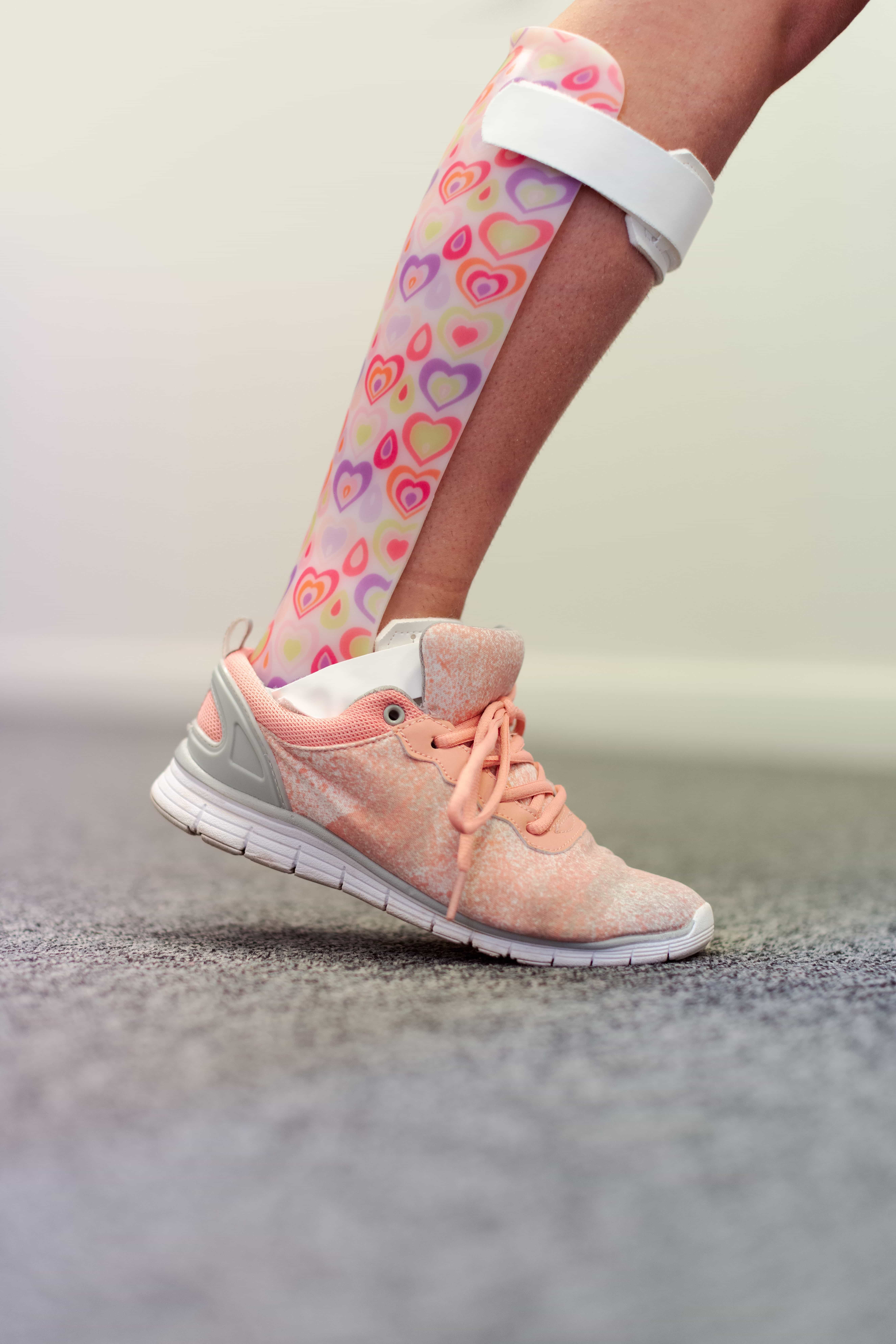
Broken bones are no joke. Injuries like breaks and fractures can have long-term effects if gone untreated and for children, they are that much more serious. Kids are known to horse around, rambunctiously playing without thinking about the consequences which can, unfortunately, lead to sustaining one of these injuries. Thankfully, casting and splinting have given us the ability to heal back to our healthy selves. They help to immobilize the injured limb to keep the bone in place until it fully heals. Of course, everyone has either had or knows someone who has needed a cast or splint, still, they are important to learn about just in case you or your child may need one someday.
Casts and splints are orthopedic devices that are used to protect, and support broken or injured bones and joints. Casts are usually made from fiberglass or plaster and splints are what you would call half-casts and provide less support than casts. Casts differ from splints because they supply more support and safety for a limb that is injured or broken.
Splints provide less support than casts, but the good thing is that they are faster and easier to use. Splints also can be tightened or loosened easily if the swelling in the arm or leg increases or decreases. Ready-made or “off-the-shelf” splints are available in many different sizes and shapes and in more unique cases, custom-made splints are required.
Simply put, casts and splints are used when a bone is broken and can also be used following orthopedic surgery. Sometimes splints are used immediately following an injury due to swelling of the injured area. After the swelling goes down, then a full cast might be applied to the injured limb. Sometimes a cast might have to be swapped during the healing process if the wounded area becomes less swollen and the cast gets looser. If this does happen, the cast might be replaced with a splint to provide more flexibility.
It may not seem important to know, but understanding the types of casts and splints that are available and what they are made of can not only improve your child’s healing process but can also potentially harm your child depending on if they have allergic reactions to specific chemical compounds.
Casts are partly made from fiberglass or plaster, which form the solid layer that protects the injured limb and keeps it restrained. Fiberglass has several advantages compared to plaster. It’s light, making the cast weight loss and comfortable. Fiberglass is the better choice in case the limb must be X-rayed during the healing process, and they are also available in a variety of colors that your child can choose from!
Your child’s cast may or may not be waterproof. The outside of most casts are made of waterproof fiberglass, but the inside liner must also be made of waterproof fabric in order for the cast to be waterproof. Your child’s healthcare provider will tell you which cast they have.
Typically, waterproof liners are breathable, and they transfer moisture away from the skin by letting water pass through and drain out which allows air to go into the cast and dry the skin.
Non-waterproof liners are used if your child is allergic to the waterproof liner. These will soak up water and take much longer to dry.
It’s important to investigate problems with blood circulation in the injured limb. A good strategy to use is checking the fingers or toes of the injured limb every day. The fingers or toes should have no swelling or changes in skin color. If you press on a nail bed until it turns white, the color should return to normal within 3 to 4 seconds after you take your finger off the nail. The fingers and toes should not be pale or bluish the temperature of the fingers and toes should feel warm. Also, check the skin around all edges of the cast each day for red, dry, swollen, cracked, blistered, or bleeding areas.
Your healthcare provider will remove the cast with a special cast saw when the bone has healed appropriately. The cast saw has a flat, rounded metal blade that vibrates. But don’t worry! The saw can cut through the cast without injuring the skin underneath. Your child’s physician will then cut the cast in several places, usually along both sides of the cast. After this, the cast will spread and open and a special tool is used to lift it off. Scissors are used to cut through the protective padding and stockinette layers which then are removed.
Complications can range from minor to severe and may vary according to the length of time that the cast is worn. It is best to speak to your child’s healthcare provider if you feel that the cast or splint is causing them harm.
Pressure sores are one injury that may occur. These are sores that develop on the skin under the cast. This can happen because the cast was too tight or did not fit correctly, causing excess pressure on one area.
There is also something called Compartment Syndrome. This is a complication caused by a tight or rigid cast that constricts a swollen limb. When the pressure inside the cast builds, it can cause damage to the muscles, nerves, or blood vessels in the space covered by the cast. The damage may be permanent if it is not discovered and treated promptly. Call your child’s healthcare provider or visit the emergency room immediately if you notice that your child has numbness or tingling in the affected limb, cold or pale skin, burning or stinging, or increased pain or swelling.
Even though we live in a world where your child can receive a cast or splint and make a full recovery, it is still important to promote safe play and educate them on how to protect themselves. Kids love to mess around and sometimes that leads to an injury, but this is no reason for them not to still be their energetic selves. The good news is that if your child does wind up needing a cast or splint, the experts at Chai Care will always be here to supply your little one with a perfectly mounted cast or splint!
* Legal disclaimer: The content of this article and the entire Chai Care blog is for educational purposes only; it does NOT constitute medical advice and must not be considered as such. Please consult a medical professional regarding any symptoms or health concerns you or your loved ones.
Feb 13, 2023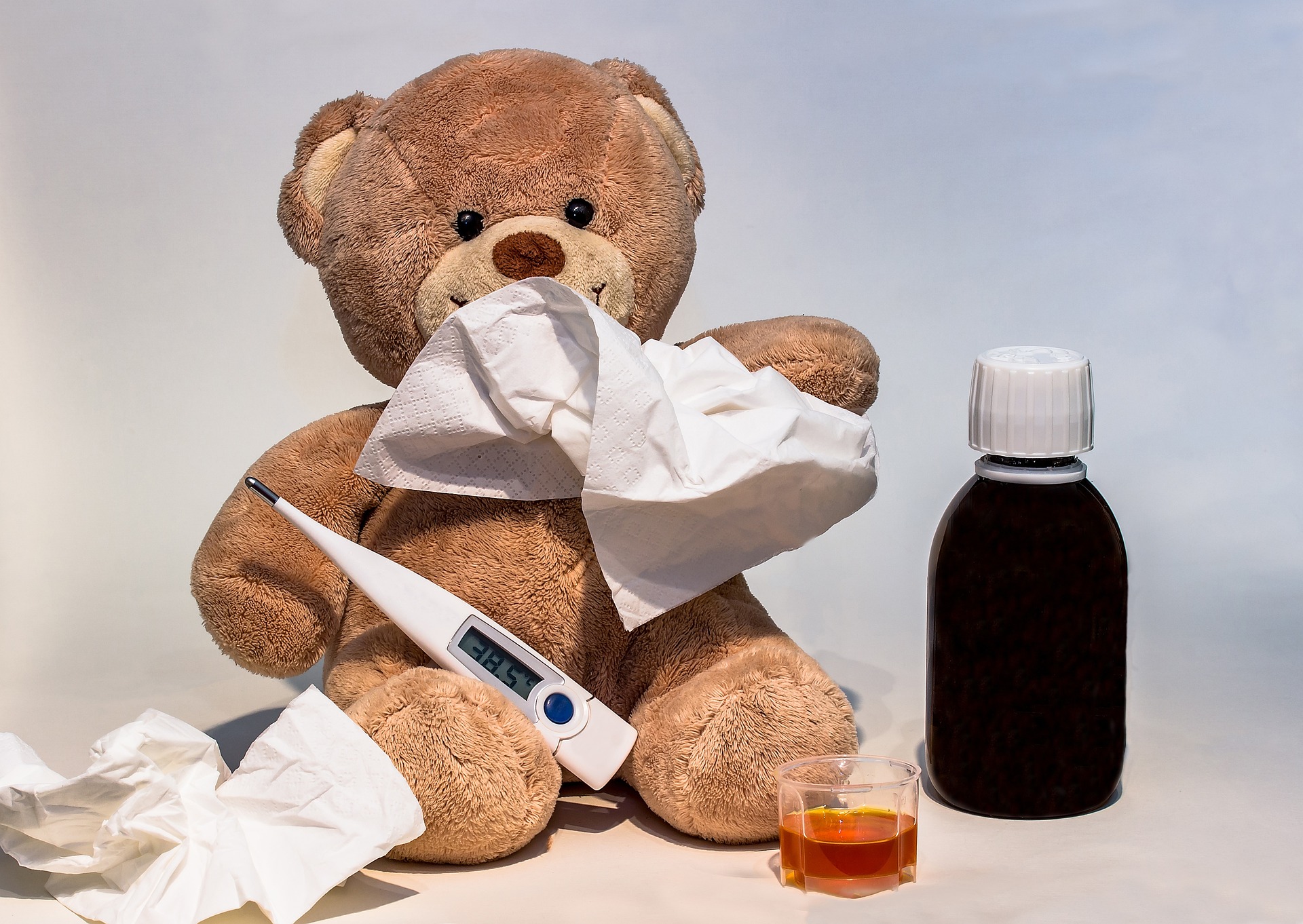
All kids get a fever at some point or another. This may sound like a bad thing, but it’s good because it can help your child’s immune system fight the infection they are struggling with. Still, it’s important to make sure your son or daughter receives the proper treatment and care necessary to make a full recovery. Whether you’re an adult or a child, fevers are brutal to deal with, but fortunately, there are plenty of ways to avoid, treat, and prevent them!
We all have been with a person who is sick and asks to feel their head, checking to see if they feel warm. This is a common method to see if someone is “burning” up and has a fever. However, for it to actually be a fever, the body’s temperature must be 100.4°F (38°C) or higher. The various and most accurate ways of measuring a temperature are rectal, armpit, ear, forehead, and mouth. Adults sometimes get a slightly different number, so the number that means a child has a fever is a little different too.
Other signs that your child might be suffering from a fever would be having chills, cold sweats, flushed skin, above-average temperature, or acting differently. Due to the discomfort, they are feeling your child may become fussy or cranky.
Typically, fevers in kids are caused by an infection. The cool thing is that a fever will help the body by stimulating the immune system to fight the infection. Healthcare experts also believe the higher the temperature, the harder it will be for germs to grow. A couple of other reasons kids may suffer from fevers would be due to immunizations, a child who is teething, and believe it or not, overdressing. Infants, more specifically newborns, may get fevers if they’re overdressed, wrapped in a blanket, or a hot environment because they don’t regulate their body temperature as well as older kids.
Treating a fever with medicine isn’t needed if a child is still playing, drinking, and doesn’t have pain. You should supply your child with medicine only when a fever causes them discomfort or prevents them from drinking fluids. It’s worth mentioning that when your child does have a fever, keep an eye on them, help them to rest, and keep offering fluids. This is so they can make up for the fluids they lose from sweating. Oral rehydration solutions like Pedialyte, are a good choice. You also can give water, soup, ice pops, and flavored gelatin. Avoid drinks with caffeine, including colas and tea, which can make dehydration worse by making kids pee more often. Let kids eat what they want (in reasonable amounts), but don’t force it if they don’t feel like eating much!
Making sure your child stays hydrated isn’t the only thing you can do. Having them wear lightweight clothing and stay covered with a light sheet or blanket can also help. It’s important to remember to keep the room at a comfortable temperature and make sure they get plenty of rest. Staying in bed all day isn’t necessary, but a sick child should take it easy.
The temperature that should trigger a call to your child’s healthcare provider depends on their age, the illness, and whether they have other symptoms. In general, call their provider if your child is younger than 3 months old with a rectal temperature of 100.4°F (38°C) or higher, 3 months or older with a temperature higher than 102.2°F (39°C), or at any age but has a health problem like cancer or sickle cell disease and has a fever.
In most cases, your child will be back to their old self within a couple of days. For older babies and kids, the way they act is more important than the reading on your thermometer or what symptoms they’re exhibiting. Don’t be alarmed if your son or daughter is a bit cranky when they have a fever. This is completely normal and should be anticipated, but if you are ever in doubt about what to do, or if your child is acting ill in a way that concerns you, the experts at Chai Care will happily take a look!
* Legal disclaimer: The content of this article and the entire Chai Care blog is for educational purposes only; it does NOT constitute medical advice and must not be considered as such. Please consult a medical professional regarding any symptoms or health concerns you or your loved ones.
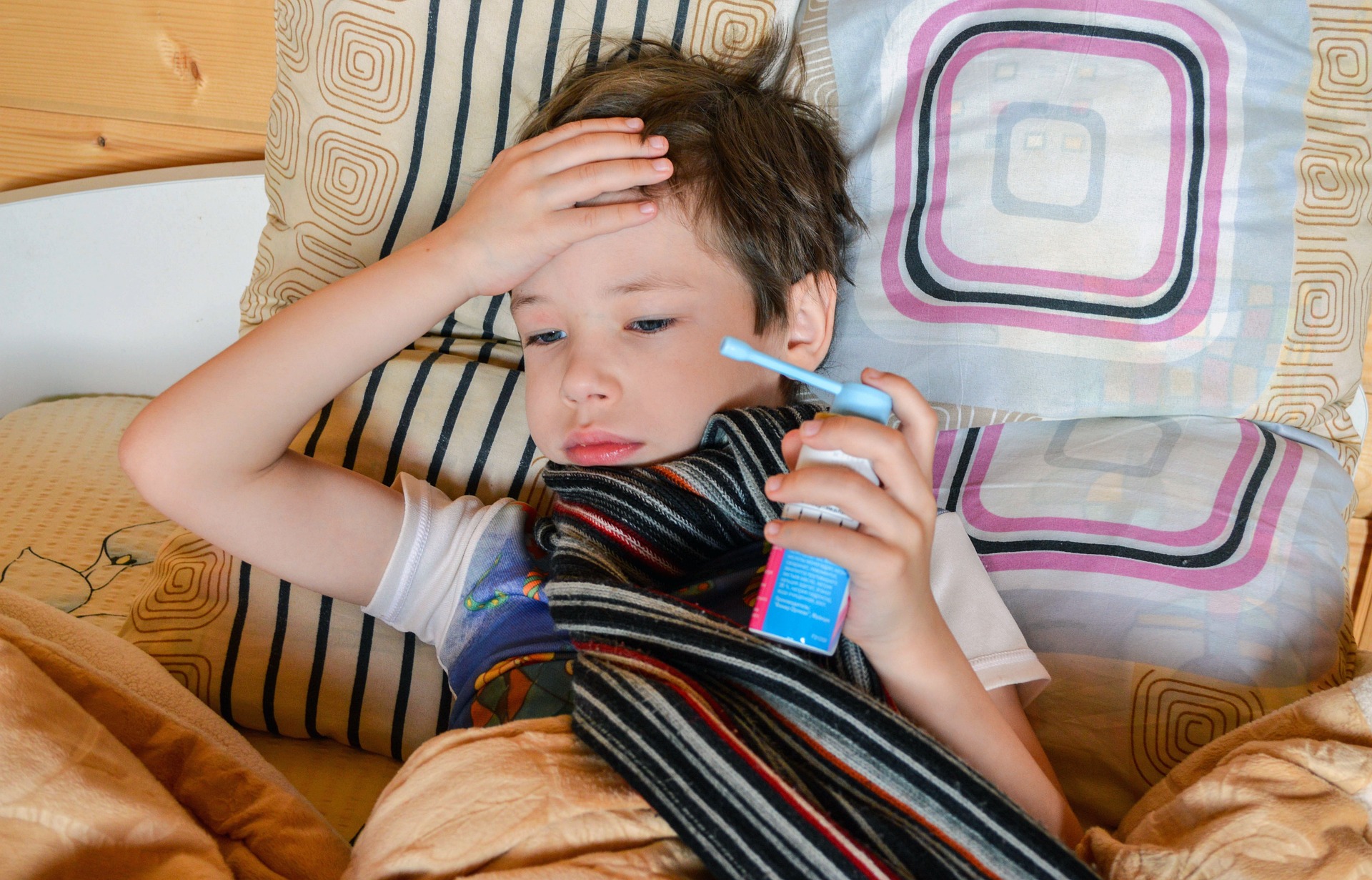
Sometimes your child will be sneezing or wheezing, and you might shrug it off, believing it to be nothing more than a simple allergy. However, there is the possibility that your son or daughter may have a health issue – asthma. This can cause bothersome daily symptoms that interfere with play, sports, school, and sleep, making unmanaged asthma dangerous. Unfortunately, childhood asthma can’t be cured, and symptoms can continue into adulthood, but with the right treatment and by staying informed, your child can keep their symptoms under control and prevent damage to growing lungs.
Asthma is a chronic lung disease. It affects your airways and the tubes that carry air in and out of your lungs. When you have asthma, your airways can become inflamed and narrowed. This can cause wheezing, coughing, and tightness in your chest. When these symptoms get worse than usual, it is called an asthma attack or flare-up.
Typically, asthma starts during childhood, usually before the age of 5. Asthma is something many children suffer from and is actually the most common chronic disease in childhood. Depending on the severity of their asthma, it can cause children to miss school and even end up in the hospital.
Even though there are many different variables that may cause a child to suffer from asthma, a few of the most popular reasons would be being exposed to secondhand smoke when their mother is pregnant with them, genetics, and family history. Children are more likely to have asthma if one of their parents has it, especially if it’s the mother, or having other diseases or conditions such as obesity and allergies.
The most common symptoms of asthma are frequent coughing that worsens when your child has a viral infection, occurs while your child is asleep, or is triggered by exercise or cold air, a whistling or wheezing sound when breathing out, shortness of breath, chest congestion or tightness, and rapid breathing. It’s important to mention that your child may experience other symptoms that are disguised as something different and if these issues don’t seem to be going away, contact their healthcare provider.
It can be tricky to diagnose asthma in children, especially if they are toddlers. Asthma has similar symptoms as other childhood conditions and some children may not demonstrate symptoms very often, so it may seem like they are having respiratory infections instead. However, if your healthcare provider were to test your child for asthma they would do a physical exam, check your child’s medical history, take a chest X-ray, and do lung function tests. If you have a young child who cannot do lung function tests, their healthcare provider may suggest doing a trial of asthma medicines. This involves giving your child the recommended medicines for several weeks to see whether the symptoms get better.
Depending on the severity of your child’s asthma their treatment will vary. There is also a chance their allergist may prescribe them two different medications. The first is quick relief. All children with asthma need quick-relief medicine to treat coughing, wheezing, shortness of breath, or an asthma attack. Your child should always have this medicine with them (typically an inhaler) and use it at the first sign of symptoms. The second is preventative controllers. Many children with asthma also need to take a controller daily to prevent asthma symptoms and attacks. Your child may need a controller if they are using quick-relief medication too often or frequently need oral corticosteroids such as prednisone for asthma attacks.
It’s best to take your child to their healthcare provider if you see any signs of asthma because early treatment will help control their symptoms and possibly prevent asthma attacks. If you notice coughing that is constant, intermittent, or seems linked to physical activity, wheezing or whistling sounds when your child breathes out, shortness of breath or rapid breathing, complaints of chest tightness, and repeated episodes of suspected bronchitis or pneumonia take your son or daughter to their provider for proper testing. If your child is diagnosed with asthma, creating an asthma plan can help you, family and friends monitor their symptoms and know what to do if an asthma attack occurs.
In severe cases, you might see your child’s chest and sides pulling inward as he or she tries to breathe. They might also have an increased heartbeat, sweating, and chest pain. Seek emergency care if your child must stop in midsentence to catch his or her breath, is using abdominal muscles to breathe, or has widened nostrils when breathing in. Even if your son or daughter hasn’t been diagnosed with asthma, seek medical attention if he or she has trouble breathing. Although episodes of asthma vary in seriousness, asthma attacks can start with coughing, which progresses to wheezing and labored breathing.
The best way to prevent an asthma attack is with careful planning and avoiding asthma triggers such as allergens and irritants that trigger asthma symptoms. Exposure to tobacco smoke during infancy is a strong risk factor for childhood asthma, as well as a common trigger of asthma attacks. It is also important to encourage your child to be active. If their asthma is well-controlled, regular physical activity can help the lungs to work more efficiently. Lastly, urge a proactive lifestyle. Being overweight can worsen asthma symptoms, and it puts your child at risk of other health problems.
Asthma is a tricky illness because, for some, it’s more serious than it is for others, and if your son or daughter is one of the lucky ones who only have minor issues, they can potentially evolve into more serious problems later in life. It is your duty as a parent to stay on top of it so your child can learn and adapt to any potential new symptoms, but not to worry, the staff at Chai Care will always be here to help your child with any everyday health issue that they find themselves facing!
* Legal disclaimer: The content of this article and the entire Chai Care blog is for educational purposes only; it does NOT constitute medical advice and must not be considered as such. Please consult a medical professional regarding any symptoms or health concerns you or your loved ones.
Jan 31, 2023
Understanding the symptoms of your child’s illness or injury is extremely important but knowing the different forms of medication and remedies they need to heal their wounds is crucial to their overall health. Most parents know the typical over-the-counter drugs to use for at-home care, however, new drugs come out every year, making it that much more important to stay informed on how to best treat your child in today’s world—in this case nebulizer treatment.
A nebulizer is a device that sprays a fine, liquid mist of medicine. It is often used in younger children who can’t use inhalers. The device has an air compressor, a cup for medicine, and tubing connected to a mouthpiece or mask. Your child breathes in the medicine through the mouthpiece or mask. Each treatment takes about 15 to 20 minutes to complete. There are several different types of nebulizers used for asthma medicine: jet nebulizers, ultrasonic nebulizers, and mesh nebulizers. It’s important to know that the instructions can be slightly different for each. So, make sure you know how to use your child’s nebulizer.
Nebulizer treatment can be tricky at times which makes the following steps important to know when giving treatment to your child. Still, you should speak to your child’s healthcare provider for specific instructions, but usage will vary depending on the child’s symptoms.
First things first, wash your hands and gather the recommended supplies which are medicine to be nebulized and additional nebulizing solution such as sterile saline. Then, grab your nebulizer set. This is the nebulizer cup, mouthpiece or mask, and tubing to connect to the nebulizer machine. Find a quiet activity for your child to do while he or she sits up for the treatment such as reading a book, drawing, or playing a quiet game.
After this, place the nebulizer on a flat surface, the best place would be on a table or the floor. Then, plug the unit into a wall outlet and connect the tubing to the nebulizer machine, and finally put the medicine into the nebulizer cup and screw the cap on securely. Some medicine may be premixed. Other medicine may need to be measured. Connect the other end of the air tubing to the nebulizer cup, connect the mouthpiece or face mask to the nebulizer cup, and now turn the machine on. It’s important to check to make sure a fine mist of medicine is coming through the face mask or mouthpiece. Most nebulizer cups need to be held upright to work correctly.
Place the mouthpiece in your child’s mouth with their lips sealed around the mouthpiece and make sure to encourage your child to take slow deep breaths in and out of their mouth. The mist should disappear with each breath.
Place the mask over your child’s mouth and nose. The adjustable elastic band may be used to hold the mask in place and make sure your child takes deep breaths in and out for the entire treatment. Instruct your child to continue slow, deep breaths until all the medicine in the nebulizer cup is gone. You may need to tap the sides of the nebulizer cup to make sure all medicine is given. Once you have done this, turn the nebulizer machine off and check your child’s peak flow and make sure to measure it before and after the treatment.
It’s important to stay with your child during their nebulizer treatment and if your child vomits or has a severe coughing spell, stop the treatment. Make sure your child rests for a few minutes, then resume the treatment. Check the filter on the nebulizer machine once a week to ensure it is clean and sanitary. When it becomes discolored, replace it with a new filter. Always keep spare nebulizer supplies at home. Before you run out, call your medical supply company.
Sometimes babies and little kids have trouble getting asthma treatments with a nebulizer. Kids need to sit still for anywhere between 15 to 20 minutes while they breathe in the medicine. Every parent with a toddler knows just how hard that can be.
Using a nebulizer should become a daily routine. Use the nebulizer at the same time each day, so your child knows to expect it. Some parents give treatment time a fun name, to make it exciting. You can do things like read stories, watch movies or play with toys during nebulizer time to make your child feel more comfortable
If your child is afraid of the mask, you can turn it into a game, saying it’s a superhero mask and will give them special powers. Maybe throw on Spider-Man or an Avengers movie so they can really engage with your story. There are also masks you can buy that are shaped like animals and cool creatures!
If your child is old enough, have them help you put the mask on, hold the tubing, and turn the machine on and make sure to congratulate your child for a job well done!
Not every child will handle nebulizer treatment the same which is why listening to your son or daughter is so important. Some children can sit still for long periods of time while others fuss around and will become agitated. Treatment such as this one requires patience and concentration, making you that much more important to the healing process. The good news is if you do find yourselves struggling to use a nebulizer, the experts at Chai Care will happily guide you through all the steps and your child will be healthy in no time!
* Legal disclaimer: The content of this article and the entire Chai Care blog is for educational purposes only; it does NOT constitute medical advice and must not be considered as such. Please consult a medical professional regarding any symptoms or health concerns you or your loved ones.
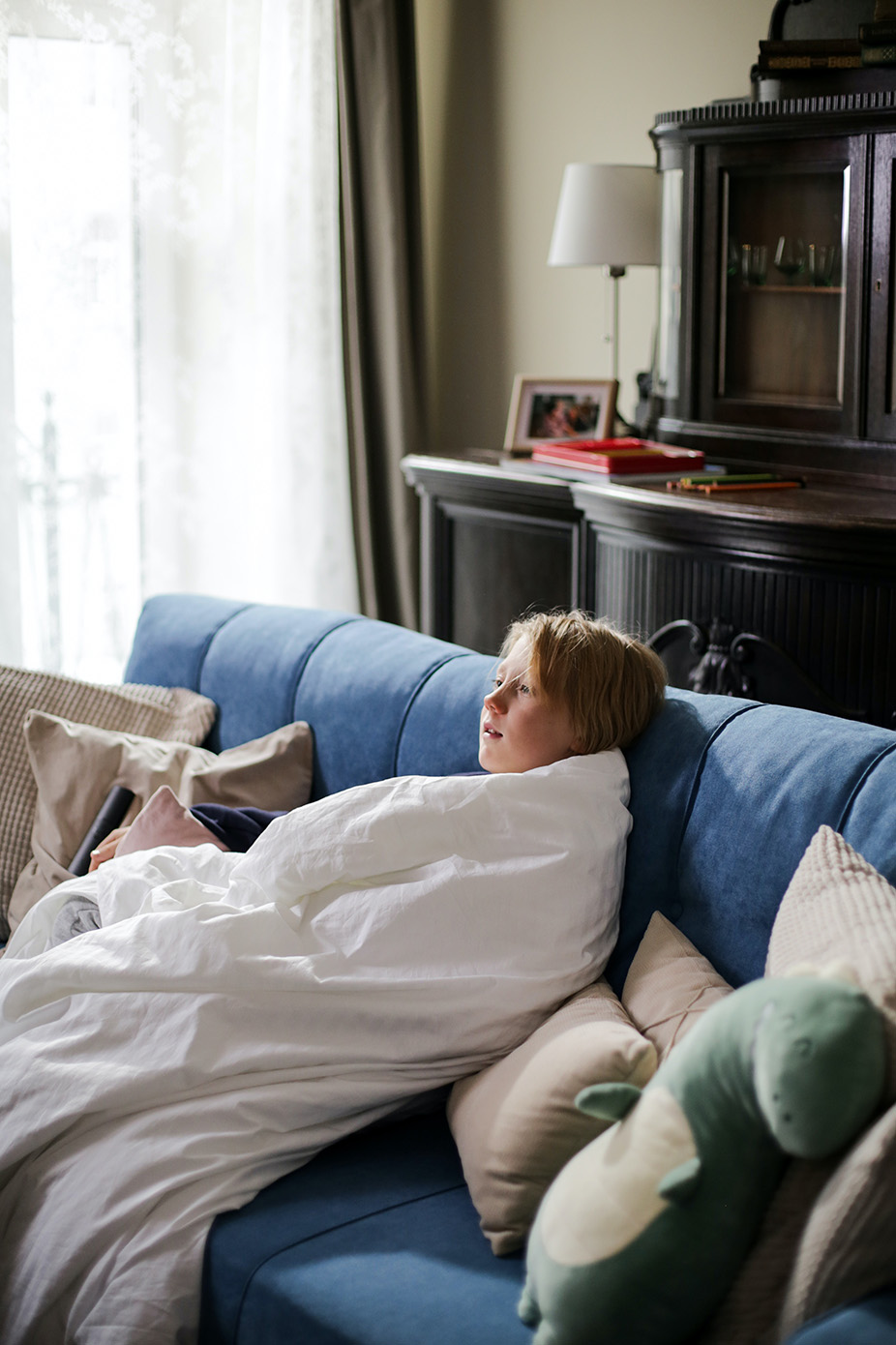
After the rise of COVID-19, it is hard to not be frightened of contagious viruses and infections. Our world can be an unforgiving place and when it comes to protecting our youth, things can be that much more intimidating. The truth of the matter is that at some point your child is going to get sick and when that happens you should be informed as much as humanly possible. With that being said, measles should be at the top of your list.
Measles is an extremely contagious respiratory infection. It causes a total-body skin rash and flu-like symptoms. Measles is rare in the United States thanks to widespread immunization, but millions of cases happen worldwide every year.
Measles (also called rubeola) is caused by a virus, so there is no specific medical treatment for it—the virus has to run its course. A child who is sick with measles should drink plenty of liquids, get lots of rest, and stay home from school or daycare to prevent the spreading of the infection.
The first symptoms of a measles infection are usually a hacking cough, runny nose, high fever, and red eyes. Kids also may have small red spots with blue-white centers inside the mouth before the rash starts.
The rash breaks out 3–5 days after symptoms start, sometimes along with a high fever of up to 104°F (40°C). The red or reddish-brown rash usually begins as flat red spots on the forehead. It spreads to the rest of the face, then down the neck and torso to the arms, legs, and feet. The fever and rash slowly go away after a few days.
Measles is very contagious. Believe it or not, 9 out of 10 people who aren’t vaccinated for measles will get it if they are near an infected person.
Measles spreads when people breathe in or have direct contact with the virus-infected fluid. It can pass through droplets sprayed into the air when someone with measles sneezes or coughs. Someone exposed to the virus usually shows symptoms 7–14 days later.
Children with measles can spread the disease from 4 days before the rash starts until about 4 days after that. They’re most contagious when they have a fever, runny nose, and cough. Those with weak immune systems due to other conditions (like HIV and AIDS) can spread the measles virus until they recover.
Even though there is no specific medical treatment for measles, you can help your child by encouraging extra rest and giving them a non-aspirin fever medicine, such as acetaminophen or ibuprofen. Also, children with measles should be kept away from others for 4 days after their rash appears. For those with a weak immune system, this should continue until they make a full recovery, and all symptoms are gone.
A measles infection can last for several weeks. Symptoms usually start 7–14 days after someone is exposed to the virus.
The best way to protect your kids is to make sure they’re immunized against measles. For most children, measles protection is part of the measles-mumps-rubella vaccine (MMR) or measles-mumps-rubella-varicella vaccine (MMRV) given when they’re 12 to 15 months old and again when they’re 4 to 6 years old. The vaccine can be given to babies as young as 6 months old if they will be traveling internationally. It’s important to speak to your healthcare provider to see when the vaccine is needed.
Widespread immunization has made measles rare in the U.S., but outbreaks still happen. With that being said, measles outbreaks have been increasing worldwide, mostly due to people not being vaccinated. It’s important for all kids who can get the vaccine to get it on time. At-risk people (such as those with weak immune systems) can’t get the vaccine. But when a lot of other people are immunized against a disease, it protects them, prevents the disease from spreading, and helps prevent outbreaks.
Even though we are fortunate enough to live in a country that is mostly protected from measles, it is important to be aware of the signs and symptoms because it’s still possible to contract it. The truth is, we would rather live our lives in peace and not worry about such things, which is why the experts at Chai Care have your back. If you ever believe your child or loved one to be infected with measles or struggling with a different everyday medical emergency, our dedicated staff will always be here to offer a helping hand!
* Legal disclaimer: The content of this article and the entire Chai Care blog is for educational purposes only; it does NOT constitute medical advice and must not be considered as such. Please consult a medical professional regarding any symptoms or health concerns you or your loved ones.

Probably the most notorious and most well-known illness a childhood illness catches is chickenpox. This infection is virtually unavoidable and when a child does contract it, you’ll be the first to know due to its obvious symptoms and your child complaining of severe discomfort. It’s one of those nasty viruses that almost every person suffers from when they are a youngster but even though it is treatable, it is important to know the signs and symptoms to not spread it to any other children.
So, what exactly is Chickenpox? Essentially, it is a viral infection that causes your child to have a fever and an itchy rash with spots all over their body. Once upon a time, chickenpox was a common childhood illness in the United States, especially in kids under age 12, but thankfully it is much rarer now, thanks to the varicella vaccine.
Chickenpox is caused by the varicella-zoster virus (VZV). This virus also can cause a painful skin rash called shingles (herpes zoster) later in life. After someone has had chickenpox, the virus stays dormant in the nervous system for the rest of a person’s life. It’s worth mentioning that the virus can reactivate later in life as shingles, however, kids who are vaccinated against chickenpox are much less likely to develop shingles when they get older.
Typically, chickenpox starts without the classic rash, with a fever, headache, sore throat, or stomachache. These symptoms may last for a few days, with the fever in the 101°–102°F range. After this, the red, itchy skin rash usually starts on the belly or back and face. After this, it spreads to almost everywhere else on the body, including the scalp, mouth, arms, legs, and genitals.
The rash begins with many small red bumps that look like pimples or insect bites. They appear in waves over 2 to 4 days, then develop into thin-walled blisters filled with fluid. The blister walls break, leaving open sores, which finally crust over to become dry, brown scabs. All three stages of the chickenpox rash (red bumps, blisters, and scabs) appear on the body at the same time. Sometimes the rash may spread wider or be more severe in kids who have weak immune systems or skin disorders like eczema.
Thankfully, symptoms are usually mild among children but may be life-threatening to children, adults, and people with impaired immune systems or healthy infants. Symptoms to look out for are fatigue, irritability, an itchy, red rash that progresses to tiny, fluid-filled blisters, fever, decreased appetite, muscle and/or joint pain, and a cough or runny nose.
The symptoms of chickenpox may resemble other skin problems or medical conditions. Making it important to consult your child’s healthcare provider for a legitimate diagnosis.
Chickenpox is very contagious. Most kids with a sibling who’s infected will most likely contract it and will show symptoms about 2 weeks after the first child does. If you do have multiple children, make sure the child with chickenpox covers their nose and mouth when sneezing or coughing. Because chickenpox is so contagious, a child who has it should stay home and rest until the rash is completely gone and all the blisters have dried. This takes about 1 week, but if you are unsure about whether your child is ready to return to school, ask your healthcare provider.
Medical professionals can usually diagnose chickenpox just by looking at the obvious rash. From there, they can guide you in watching for complications and in choosing different medicine to ease your child’s itching. It’s important that if you take your child to their healthcare provider to let the staff know ahead of time that your child might have chickenpox to not expose other kids in the office — for some children, a chickenpox infection could cause serious complications.
Since a virus causes chickenpox, antibiotics cannot treat it. But antibiotics are needed if bacteria infect the sores. This usually happens when kids scratch and pick at the blisters. An antiviral medicine might be prescribed for people with chickenpox who are at risk for complications, but this will depend on the child’s age, health, the extent of the infection, and the timing of treatment.
The great news is that chickenpox can be prevented! Most children who get the chickenpox vaccine will not get chickenpox. And if they do get chickenpox, their symptoms will be much milder. Healthcare providers highly recommend that kids receive the vaccine when they’re 12–15 months old and a booster shot when they’re 4–6 years old. Children 6 years of age and older who have never had chickenpox and aren’t vaccinated can and should get two doses of the vaccine and kids who have had chickenpox do not need the vaccine — they usually have lifelong protection against the illness.
The best to way to help the itchiness and discomfort of chickenpox is by using a cool wet compresses or giving your child a bath in lukewarm water every 3–4 hours for the first few days. It’s worth mentioning that oatmeal bath products can help to relieve itching. Other methods of pain relief would be patting (not rubbing) the body and putting calamine lotion on itchy areas.
To prevent scratching, it’s best to use mittens or gloves on your child’s hands to avoid scratching during sleep and trim their fingernails to keep them clean.
If your child has blisters in the mouth, give cold, soft, bland foods because chickenpox in the mouth can make it hard to drink or eat. Avoid anything acidic or salty, like orange juice or pretzels.
Most chickenpox infections don’t need special medical treatment but, in some cases, unexpected problems can happen. You should call your healthcare provider if your child has a fever that lasts for more than 4 days, has a severe cough or trouble breathing, has an area of rash that leaks pus, has a severe headache, or lastly, has a stiff neck.
In most cases, chickenpox is not something to lose sleep over. Nearly every child gets it and even though watching your child in agony is unpleasant, this virus goes away quickly and will soon become a thing of the past. Even though there are many ways you can treat your child at home, it is still best to take your kid to their healthcare provider and the experts at Chai Care will always be here to offer their top-notch service as they supply your little one with exceptional care!
* Legal disclaimer: The content of this article and the entire Chai Care blog is for educational purposes only; it does NOT constitute medical advice and must not be considered as such. Please consult a medical professional regarding any symptoms or health concerns you or your loved ones.
Jan 30, 2023
It’s fair to say we all have had a nosebleed at some point in our lives. They are extremely common and can happen for many reasons, but when you see a child with one, they are that much more frightening, especially if you’re the parent of the child. A million questions race through your mind, concerned and panicked that it is due to a broken nose or a head injury. Fortunately, we live in a world with plenty of methods to treat a nosebleed, one of them being nasal cauterization—a simple procedure that can drastically improve your child’s quality of life.
Nasal cautery, or nasal cauterization, is a procedure used to treat nosebleeds, also known as epistaxis. This procedure is when a chemical or electrical device is applied to the mucous membranes in the nose to stop the bleeding. This is performed with topical anesthetics, usually in an operating room under general anesthesia. Sometimes this procedure is performed in conjunction with other procedures to improve nasal breathing such as sinus surgery, nasal endoscopy, or septoplasty.
Typically, children benefit from nasal cautery when they have recurrent nosebleeds. These episodes can occur from a prominent blood vessel in the nose that bleeds from trauma (nose picking, rubbing the nose, or bumping the nose), and from drying of the mucous membranes lining the nose. Certain underlying medical conditions can make children more prone to nosebleeds, including individual or familial bleeding disorders, platelet disorders, cancers, or medications used to treat other conditions.
If an underlying medical condition or medication is the cause of the nosebleeds, first attempts are aimed to treat or to remove these sources of the tendency for bleeding. In addition, nasal creams, ointments, gels, nasal saline spray, and increased environmental humidification can help improve nosebleeds by decreasing the dryness in the nose. This makes the nose less prone to bleeding and for young children, it’s best to avoid nose-picking. If nosebleeds continue despite these attempts, nasal cautery may be recommended.
The procedure is typically performed either in the pediatric ENT clinic procedure room or in an operating room. The procedure only takes 5-10 minutes but may take longer depending on the severity and any additional combined procedures planned. The surgeon will provide an idea of how much time is expected, but this may change during the procedure.
After the procedure, your child may be asked to stay in the hospital, but in most cases, this won’t happen. When home, Tylenol or Ibuprofen is typically appropriate for pain control. Sometimes stronger narcotic pain medications may be prescribed for additional pain control. Also, the use of topical moisturizing and/or antibiotic ointment in the nose is recommended after the procedure. This will help with healing and decreases crusting. If the child develops any concerning symptoms after the procedure, including pauses in breathing, color change of the skin (particularly if the lips, face, or hands are turning blue), appearing lethargic or tired, severe bleeding, or any other sudden change from his/ her normal behavior, please seek immediate medical attention.
As we know, nose cautery can help prevent nosebleeds. The healthcare provider uses a chemical swab or an electric current to cauterize the inside of the nose. This seals the blood vessels and builds scar tissue to help prevent more bleeding. For this procedure, the provider will numb the inside of your child’s nose and once the procedure is finished, your child may feel itching and pain in the nose for 3 to 5 days but not to worry, over-the-counter pain medicines can help with the pain! Keep in mind, your child may want to touch, scratch, or pick at the inside of the nose. Make sure to watch your child carefully so you can stop them before any touching or picking because this will cause more nosebleeds.
It’s important to keep a lookout for any signs of distress in your child and to know when you should contact your provider. If your child has pain that does not get better after your child takes pain medicine, they get another nosebleed and the nose is still bleeding after you have pinched the nose shut 3 times for 10 minutes each time, they have a fever or if your child does not get better as expected, then it may be time to bring your child back in for a check-up.
Afterthought
If you feel that your child may need nasal cauterization, it’s best not to wait, hoping they will get better on their own. We live in a country that has more than enough reliable healthcare providers, Chai Care being one of them! Our trained experts will always be here to help in a time of need and will make sure your youngster is back to normal in no time!
* Legal disclaimer: The content of this article and the entire Chai Care blog is for educational purposes only; it does NOT constitute medical advice and must not be considered as such. Please consult a medical professional regarding any symptoms or health concerns you or your loved ones.